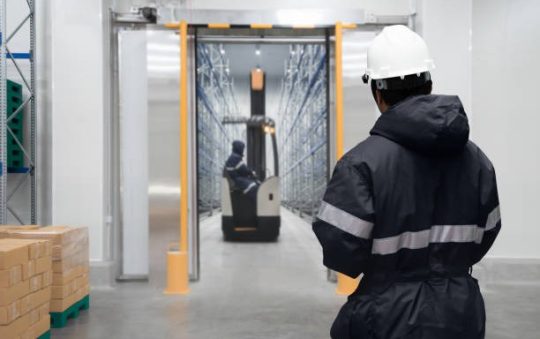In today’s digital world, protecting your assets is more crucial than ever. As technology evolves, so do the risks associated with keeping your valuables safe. But don’t worry; I’m here to help you navigate this complex landscape. We’ll explore strategies for comprehensive coverage against security breaches and why this should be a top priority.
1. Why Comprehensive Coverage Matters
Security breaches are not only costly but can have lasting effects on your reputation. A single breach can lead to massive losses and can even make customers lose trust. That’s why having a comprehensive security plan is essential.
Recognizing Potential Threats
To protect your assets effectively, you first need to understand the threats. Here are some common security risks:
-
Cyber-attacks like phishing and malware
-
Physical theft and unauthorized access
-
Insider threats from disgruntled employees
-
Social engineering tactics
2. Crafting a Security Strategy
Now that we know the threats, let’s dive into how to craft a security strategy.
Assessing Your Current Security Measures
The first step is to take a good, hard look at your current security situation. Examine what’s working and where improvements are needed. This assessment will form the backbone of your approach to protecting your assets.
Setting Clear Priorities
Once you’ve assessed your current measures, it’s time to set priorities. Identify the essential assets that need the highest level of protection. This prioritization will help focus your efforts where they’re needed most.
Implementing the Right Technology
Incorporating advanced technology into your security strategy is crucial.
Choosing the Right Tools
Technology offers a wealth of solutions for guarding against security breaches:
-
Smart surveillance cameras
-
Biometric authentication systems
-
Intrusion detection software
Systems like the Aiphone video intercom system can enhance security by providing video verification and controlled access.
3. Building a Human-Centric Security Culture
Technology is just one part of the puzzle. Building a culture of security is equally important.
Training Your Team
Education is vital. Train your team to recognize potential threats and respond appropriately. Regular workshops and simulations can keep everyone sharp.
Establishing a Clear Incident Response Plan
Having a well-defined response plan makes all the difference in a crisis. Ensure everyone knows their roles and responsibilities when a breach occurs. Quick action can mitigate damage.
4. Investing in Reliable Security Systems
Security systems are your first line of defense. Here’s how to make sure you’re getting the most out of them.
Evaluating Security Providers
Not all services are created equal. Do your homework to find a provider who meets your specific needs. Look for those with a proven track record and customized offerings.
Maintaining and Updating Your Systems
Regular maintenance is key. Keep your security systems up to date with the latest software updates and patches. Regular audits ensure everything is working as it should.
Utilizing Access Control Solutions
Access control is a game-changer when it comes to physical security. By restricting access to sensitive areas, you can significantly reduce the risk of unauthorized entry and potential theft.
5. Leveraging Cybersecurity Tactics
With the rise of digital threats, cybersecurity is non-negotiable.
Protecting Your Network
Ensure your network is secure with robust firewalls, anti-virus software, and encrypted connections. Don’t overlook regular vulnerability assessments.
Adopting Multi-Layered Security
Don’t rely on just one line of defense. Use a combination of security measures to create multiple layers that deter even the most persistent intruders. Think of it like creating a digital fortress.
Selecting High-Strength Internet Security
HSI Security can provide the comprehensive layer of protection necessary for business continuity. It offers vital features such as automated threat detection and instant response mechanisms, sparing you the headache of dealing with breaches after they happen.
6. Monitoring and Reviewing Security Measures
Constant vigilance is part of effective security.
Implementing Continuous Monitoring
With real-time monitoring, you can get instant alerts if something’s wrong. This proactive approach helps you stop breaches before they cause harm.
Regular Security Audits
Conducting regular audits can uncover hidden vulnerabilities. Having an external team review your systems can provide fresh insights and recommendations.
7. Staying Compliant with Regulations
Legal compliance with security regulations is essential not just to avoid fines but to establish trust with your stakeholders.
Understanding Relevant Laws
Familiarize yourself with laws related to data protection and privacy. Non-compliance can result in severe penalties and damage to your business reputation.
Documenting Compliance Efforts
Keep meticulous records of your compliance efforts. This documentation can protect you if questions about your security practices arise.
8. Working with Security Professionals
Sometimes, getting expert help is the most efficient way to safeguard your assets.
Hiring Security Consultants
Security consultants provide valuable expertise. They can tailor solutions to fit your unique requirements and help you stay ahead of emerging threats.
Building Partnerships with Trusted Experts
Forging relationships with trusted security experts offers fresh insights and keeps you informed of industry best practices. This collaboration ensures you’re never on your own when facing security challenges.
9. Understanding the Cost-Benefit Analysis
Security investments aren’t just expenses—they’re investments in your company’s future.
Calculating Potential Risks
Consider both the probability and potential impact of various threats on your assets. This risk assessment helps balance spending with security needs.
Determining ROI from Security Investments
Understanding the ROI of your security measures helps justify the costs to stakeholders. Consider how effective security reduces potential losses and builds customer trust.
Final Thoughts
So there you have it—a comprehensive guide to protecting your assets against security breaches. Balancing technology with a human touch, staying compliant, and enlisting professional guidance are all keys to a robust security posture. Remember, the goal is to create a seamless and secure environment that fosters trust and ensures your assets remain safe. Embrace these strategies, and you’ll be well-prepared to face any security challenges that come your way.




